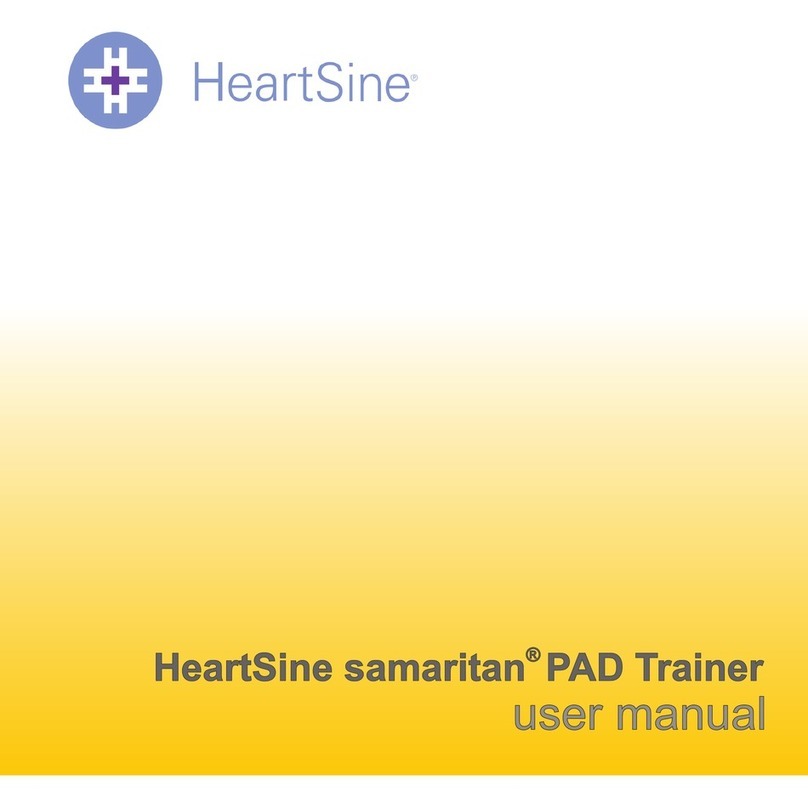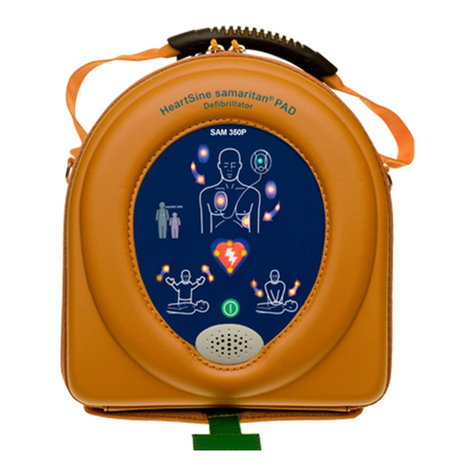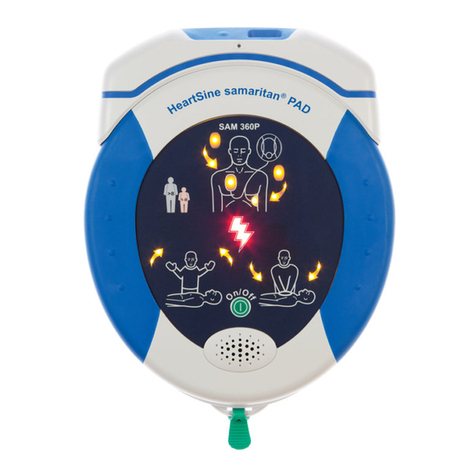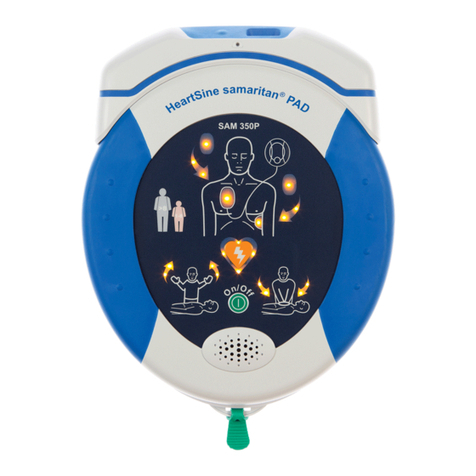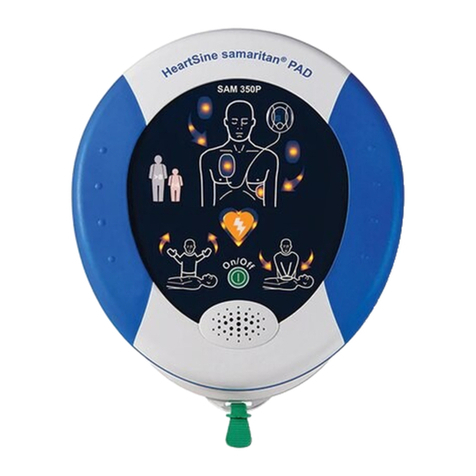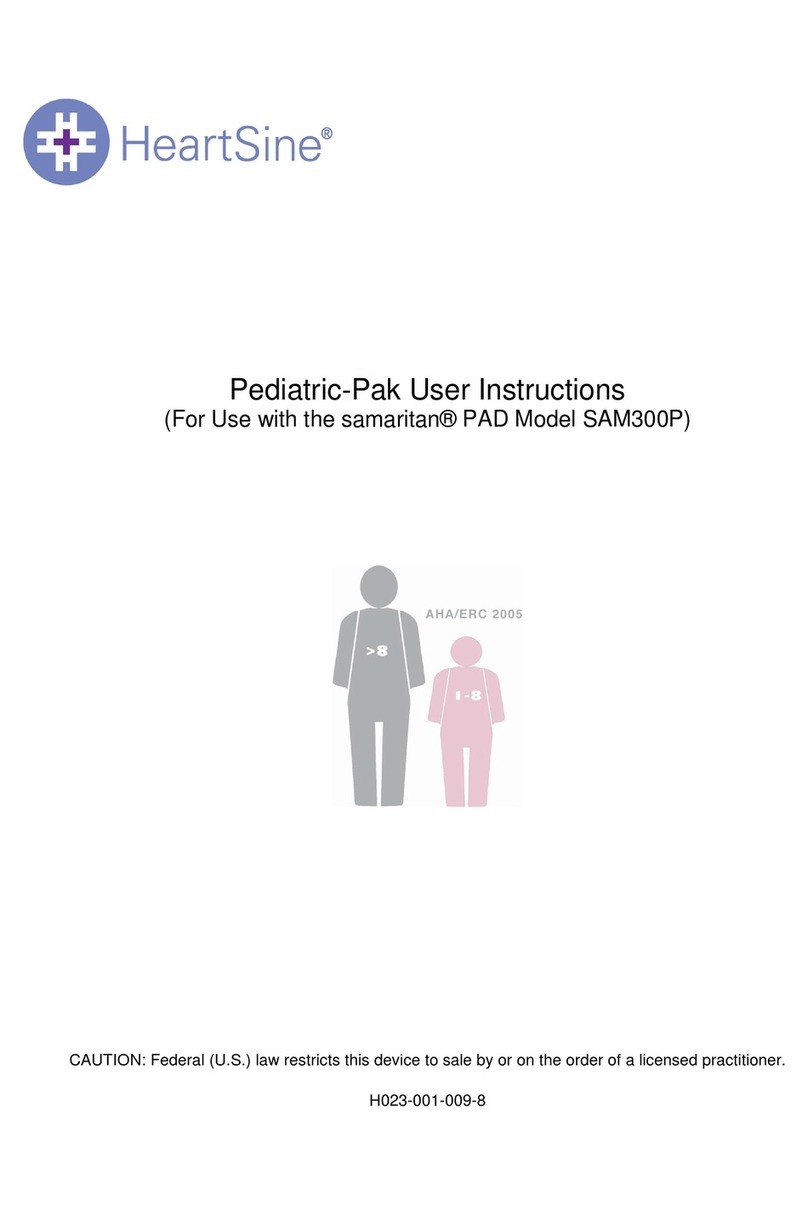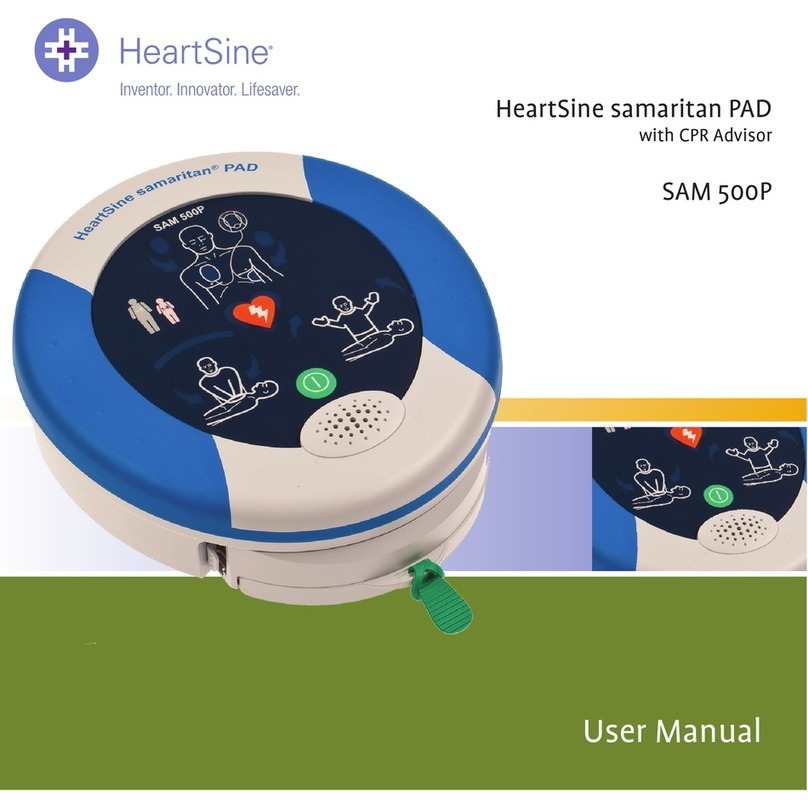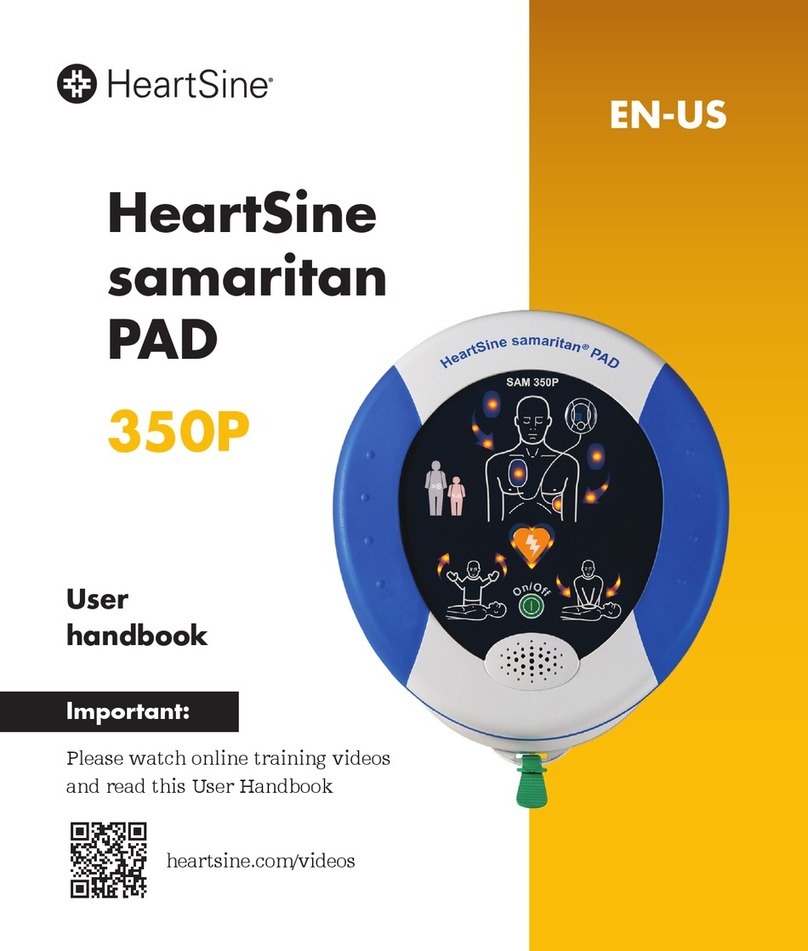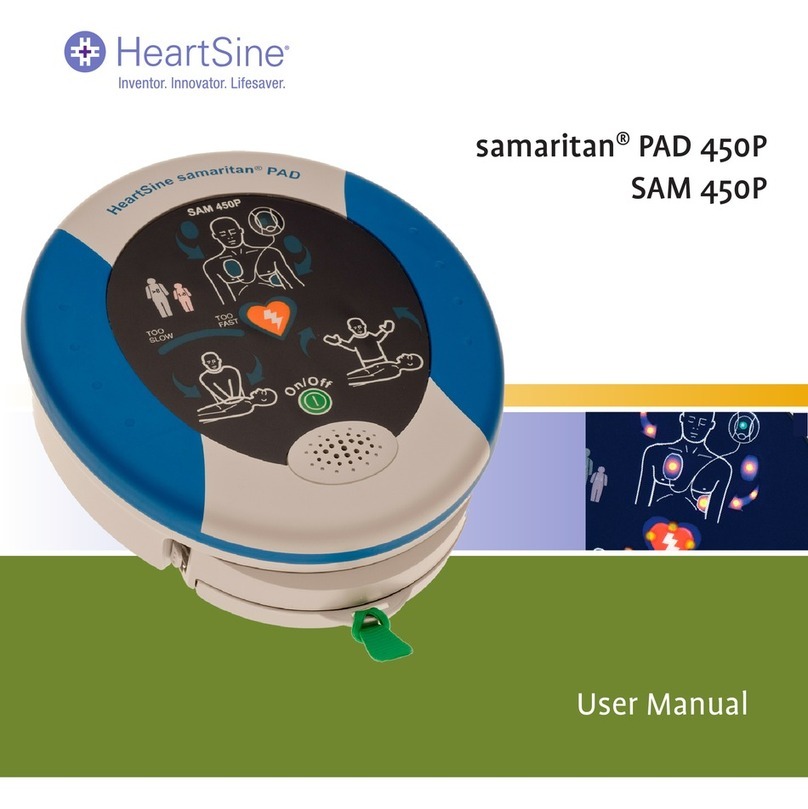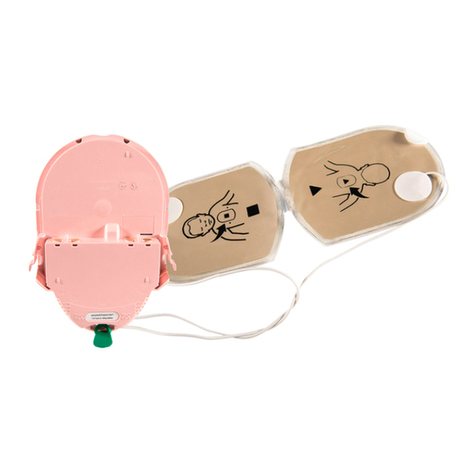
8 EN-UK
Overview
chambers of the heart, called the ventricles. Although
there are many different types of VT, this arrhythmia
can be potentially life-threatening if the patient
presents with no pulse and is unresponsive. If not
treated with immediate defibrillation VT may lead to
other arrhythmias.
Treatment by AED
It is a common misconception that CPR alone and
calling emergency services is enough. CPR is a
temporary measure that maintains blood flow and
oxygen to the brain. CPR alone will not return a heart
to a normal rhythm during VF or VT. The
key to survival is defibrillation – and the sooner
the better.
Defibrillation is a common treatment for life-
threatening arrhythmias, mainly ventricular
fibrillation. Defibrillation consists of delivering an
electrical shock to the heart with a device called
a defibrillator. This restores normal heart muscle
contractions and allows normal sinus rhythm to be
restored by the body’s natural pacemaker in
the heart.
The HeartSine samaritan PAD uses the HeartSine
samaritan ECG arrhythmia analysis algorithm.
This algorithm will evaluate the patient’s ECG to
ascertain if a therapeutic shock is appropriate. If a
shock is required, the HeartSine samaritan PAD will
charge and advise the user to press the shock button
(SAM 350P/500P) or will automatically deliver a shock
(SAM 360P). If no shock is advised, the device will
pause to allow the user to deliver CPR.
It is important to note that cardiac defibrillators, like
the HeartSine samaritan PAD, will not administer a
shock unless a lifesaving shock is required.
Sudden cardiac arrest
Sudden cardiac arrest (SCA) is a condition in which
the heart suddenly stops pumping blood effectively
due to a malfunction of the heart’s electrical system.
Often victims of SCA have no prior warning signs
or symptoms. SCA also can occur in people with
previously diagnosed heart conditions. Survival
from SCA depends on immediate and effective
cardiopulmonary resuscitation (CPR).
The use of an external defibrillator within the first
few minutes of a collapse can greatly improve a
patient’s chance of survival. Heart attack and SCA
are not the same, though sometimes a heart attack
can lead to an SCA. If you are experiencing symptoms
of a heart attack (chest pain, pressure, shortness of
breath, tight feeling in the chest or elsewhere in the
body), immediately seek medical attention.
Sinus rhythm and ventricular fibrillation
The normal heart rhythm, known as sinus rhythm,
creates electrical activity resulting in coordinated
contraction of the heart muscle. This generates
normal blood flow around the body.
Ventricular fibrillation (V-fib or VF) is a condition
in which there is uncoordinated contraction of
the heart muscle, making it quiver rather than
contract properly. Ventricular fibrillation is the most
commonly identified arrhythmia in SCA patients.
In victims of SCA it is possible to re-establish normal
sinus rhythm by means of an electric shock across the
heart. This treatment is called defibrillation.
Ventricular tachycardia
Ventricular tachycardia (VT) is a type of tachycardia
(rapid heartbeat) that arises from improper electrical
activity of the heart. VT starts in the bottom





















